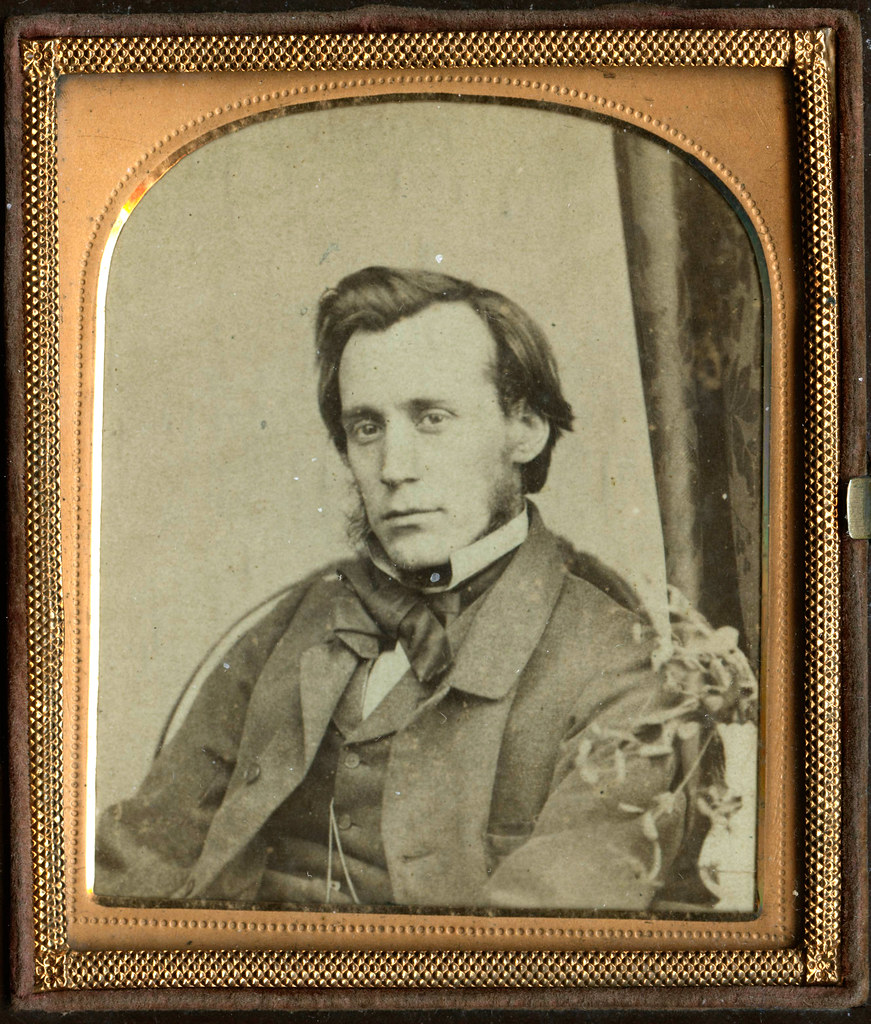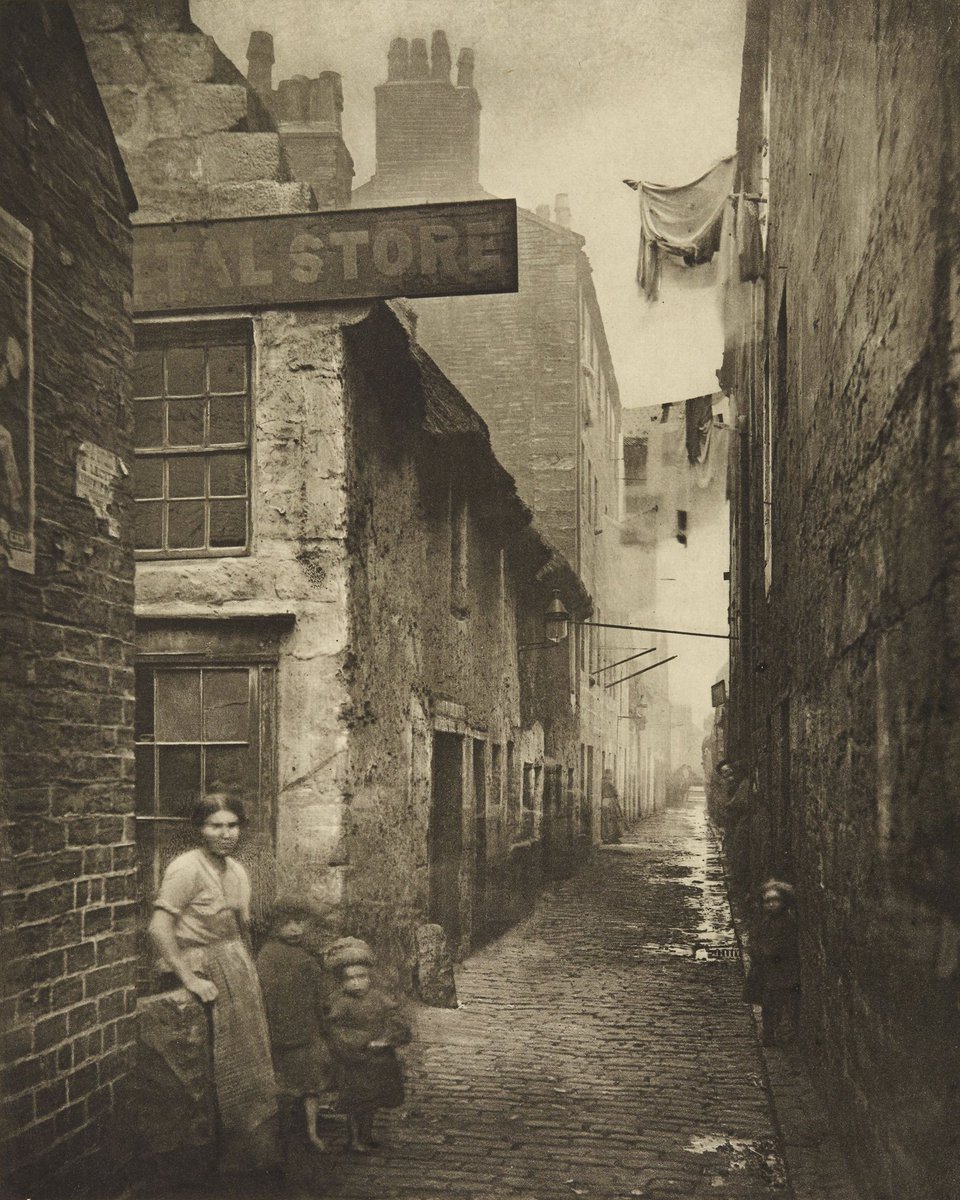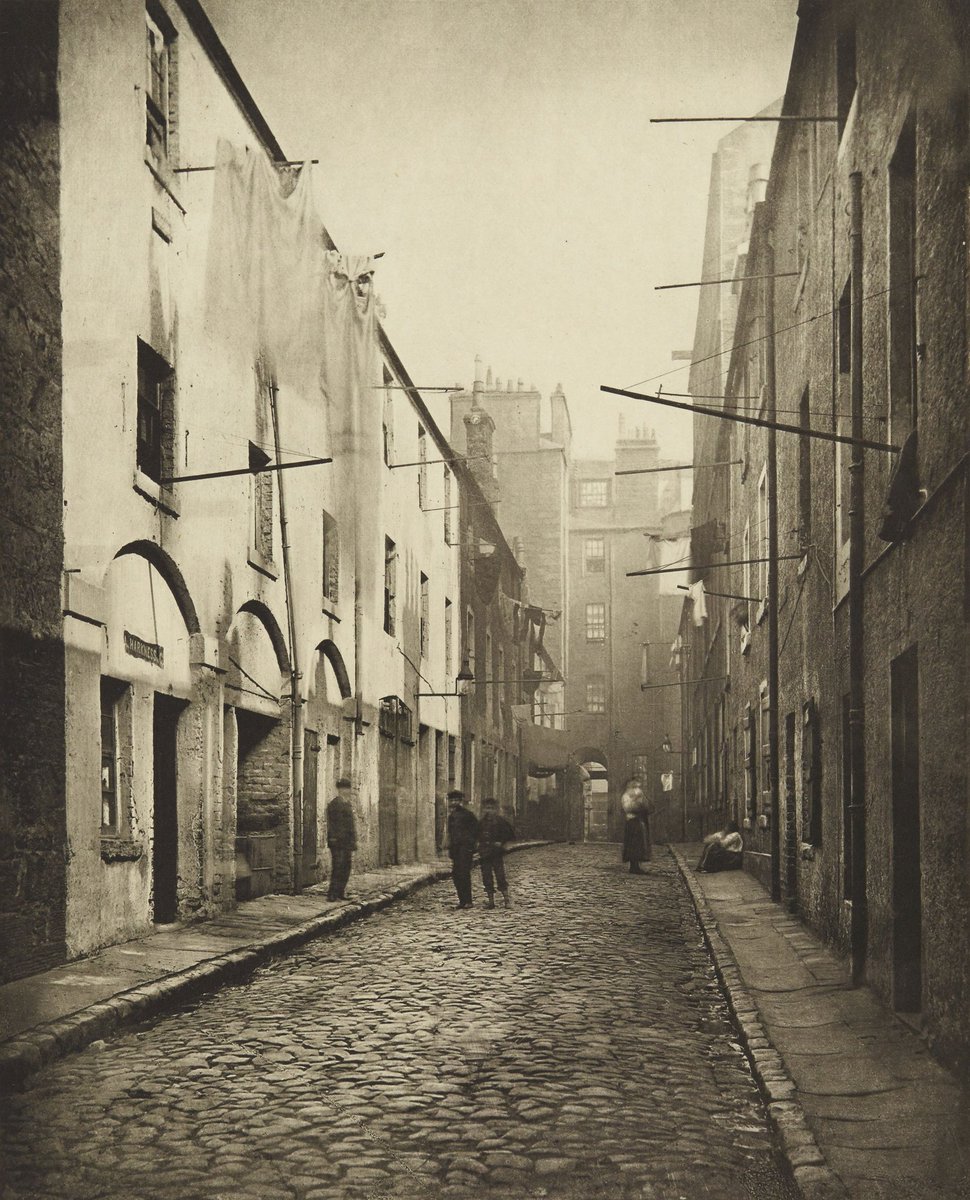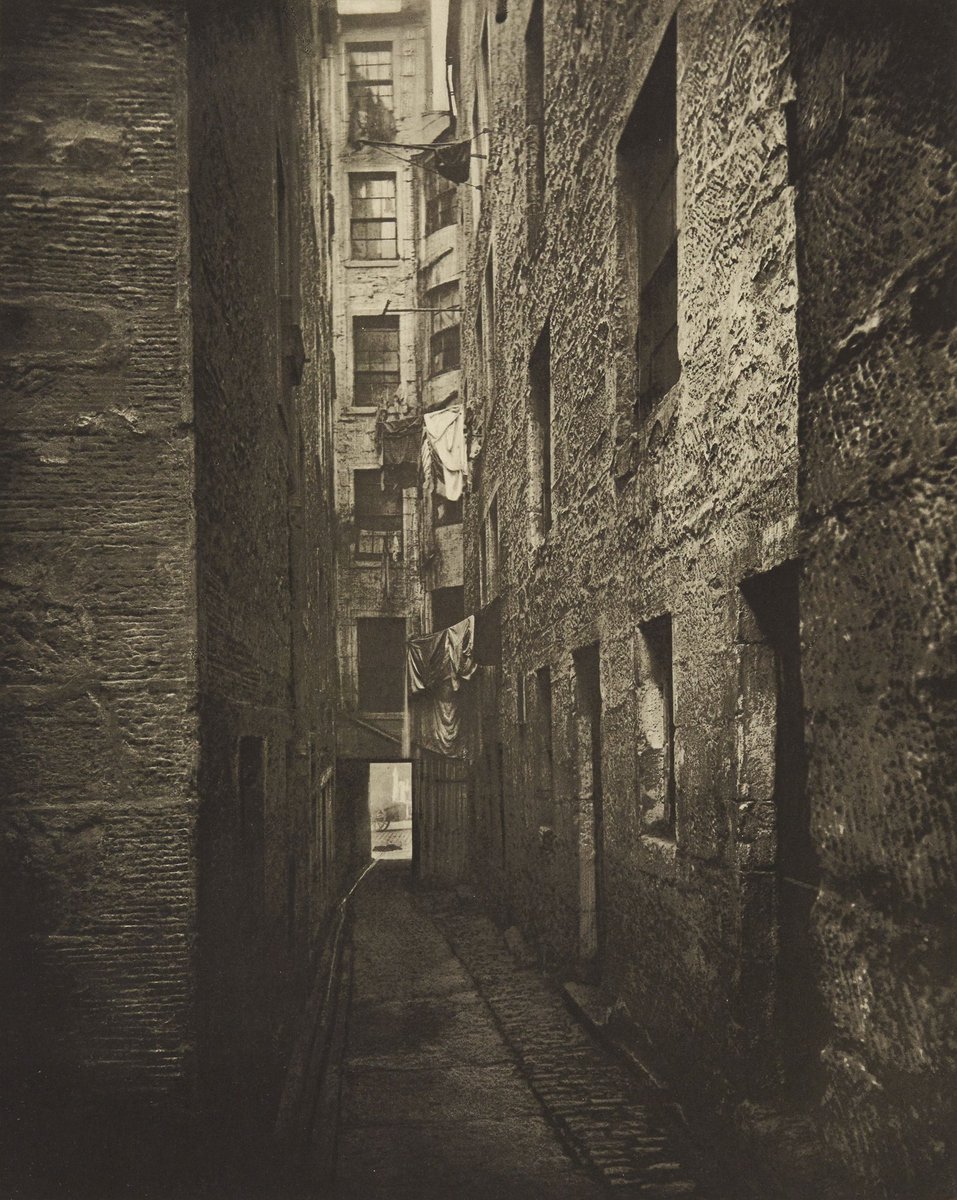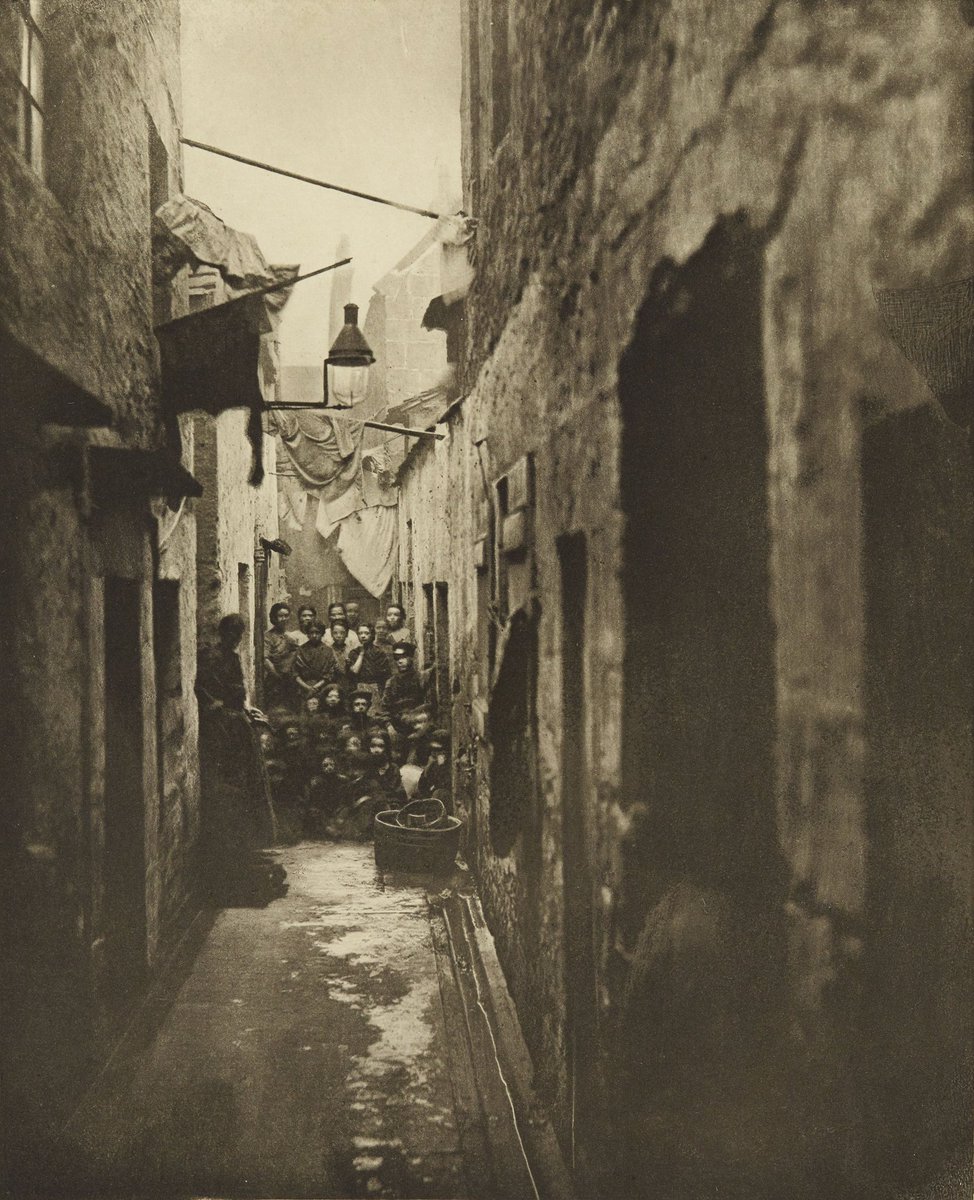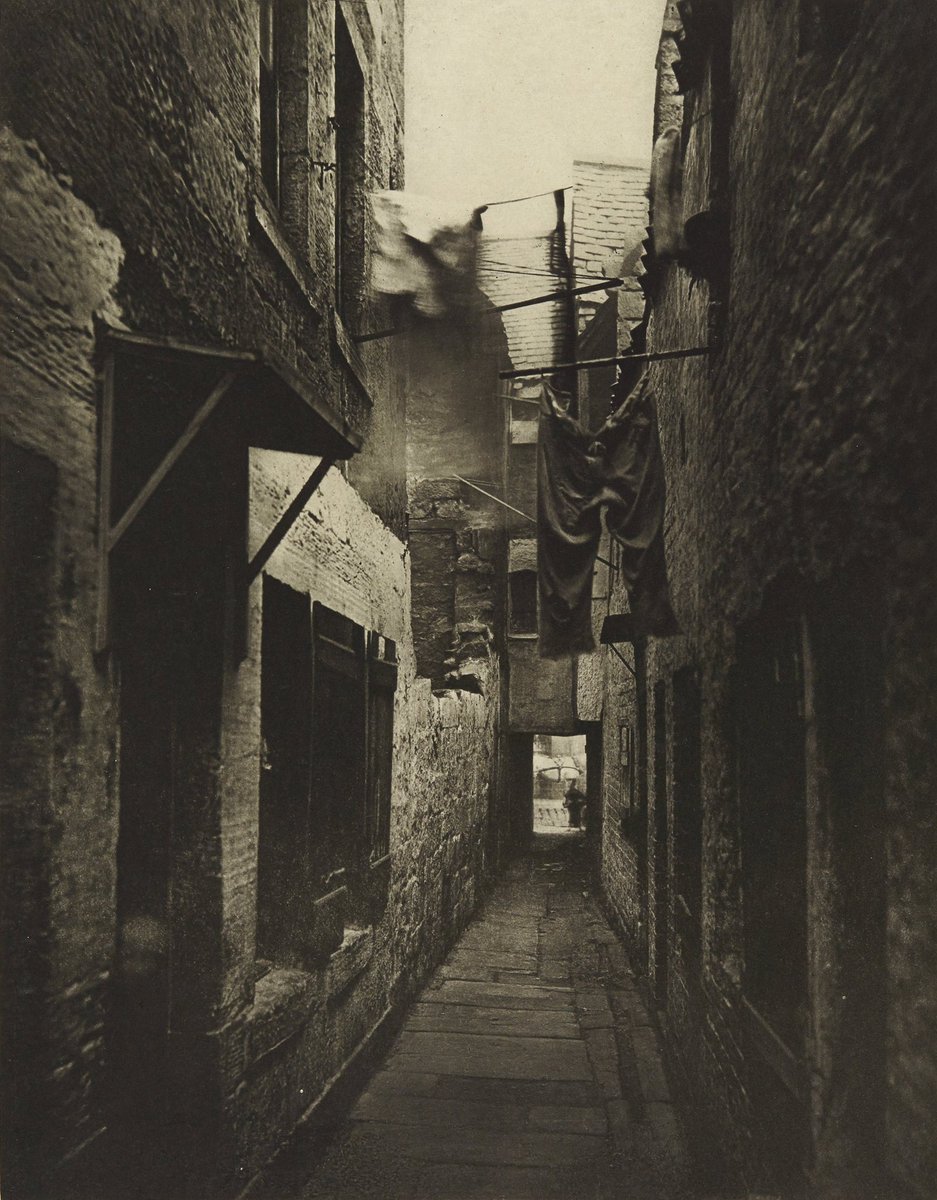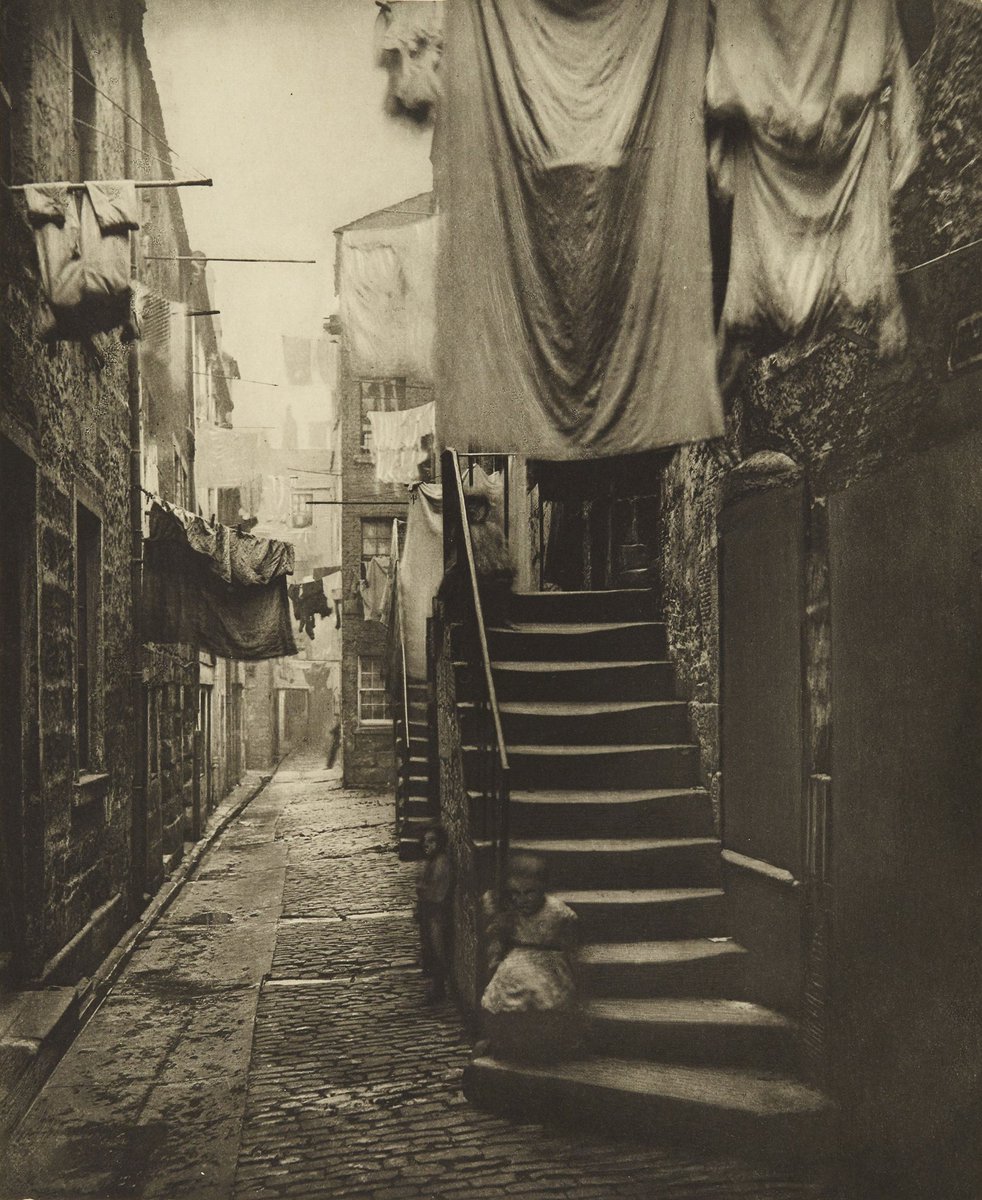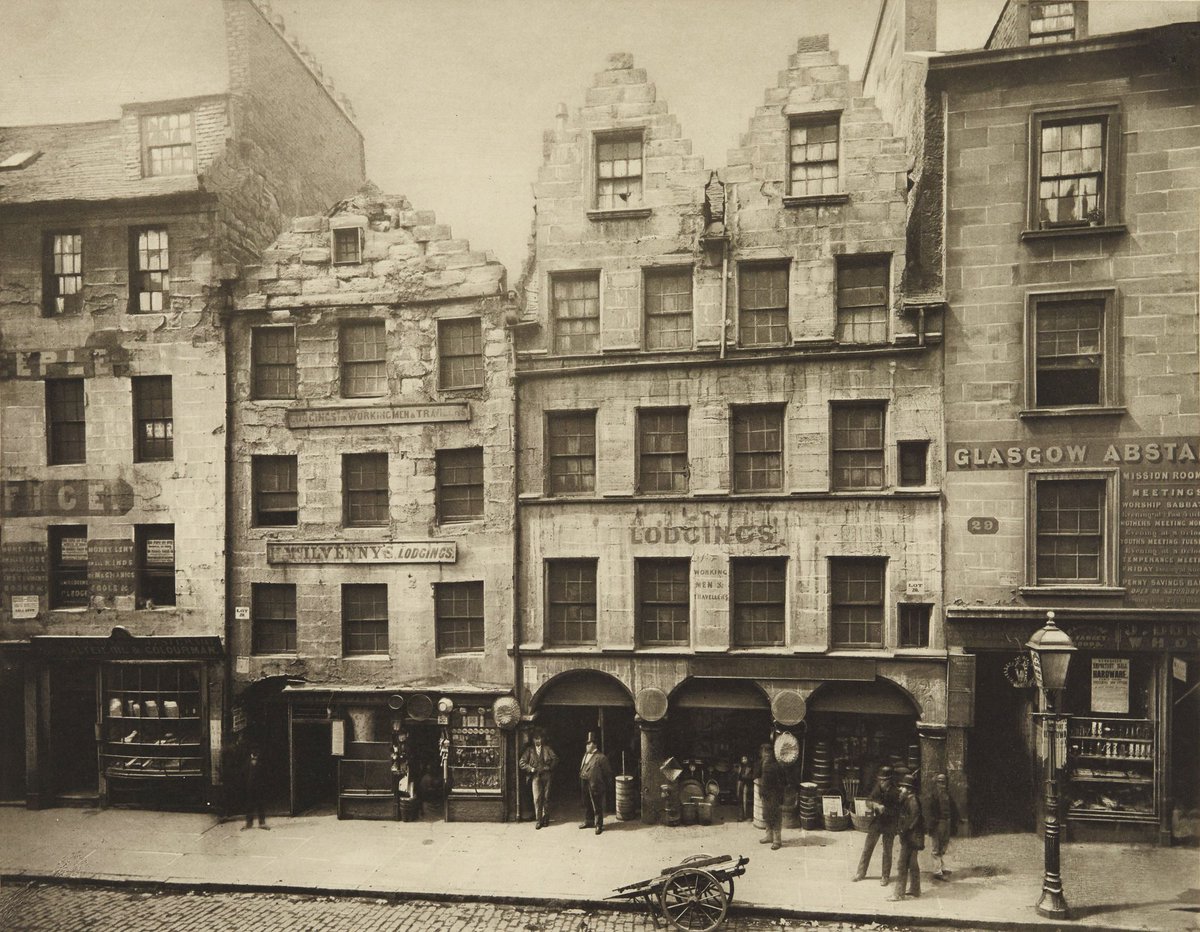Thomas Annan (born Dairsie, Fife 1829) was a Scottish photographer, notable for being the first to record the bad housing conditions of the poor. In 1866 he was commissioned to make photographic records of the condemned streets and wynds of Glasgow.
Thomas Annan, ca 1855
Thomas Annan, ca 1855
In 1811 Glasgow had a population of approximately 100k by the mid 1840s this had almost tripled to just under 300k. Life expectancy in the slums plummeted, in the 1830s and 1840s it was 27: the lowest it had been since the Black Death.
Plate 1: Old vennel off High Street 1868.
Plate 1: Old vennel off High Street 1868.
Some agricultural workers from the Highlands forced off the land moved south to city to make a new life, Irish Immigrants too.
Plate 2: Broad Close, 167 High Street, Glasgow 1868
Plate 2: Broad Close, 167 High Street, Glasgow 1868
A local writer wrote of old Glasgow in 1858:
‘The landed aristocracy were permitted, just as now, to effect clearings – systematically starve and punish by tyranny, a peasantry with a right equal with their own to live by the soil’.
Plate 3: High Street, Glasgow, 1868.
‘The landed aristocracy were permitted, just as now, to effect clearings – systematically starve and punish by tyranny, a peasantry with a right equal with their own to live by the soil’.
Plate 3: High Street, Glasgow, 1868.
The poverty-stricken people of Ireland fleeing famine, those who built British infrastructure made up almost 20% of the city’s population. In 1851 alone nearly 60,000 immigrants form Ireland arrived in Glasgow.
Plate 4: Close no 148, High Street, Glasgow, 1868.
Plate 4: Close no 148, High Street, Glasgow, 1868.
September 1865 John Blackie, the Provost of Glasgow City Council proposed The City Improvement Trust. In 1866 the City Improvement Act was passed.
Plate 5: Close no 118, High Street, Glasgow 1868
Plate 5: Close no 118, High Street, Glasgow 1868
The clean water supply to Glasgow from Loch Katrine aimed to improve the unsanitary conditions that led to several epidemics of cholera and typhoid mid–century was by then complete.
Plate 6: Close no 101, High Street, Glasgow 1868
Plate 6: Close no 101, High Street, Glasgow 1868
Along with the support of John Carrick (city architect), and William Gairdner (Professor at the University, and Medical Officer for Glasgow), the slum demolition plan included the commission to make photographic records
.
Plate 7: Close no 193, High Street, Glasgow 1868
.
Plate 7: Close no 193, High Street, Glasgow 1868
Gairdner viewed the inhabitants of the slums as ‘parasitic’, profligate class (there were ongoing council debates about whether Irish immigrants, perceived as a drain on the public purse, should be returned to their homeland).
Plate 8: Close no 80, High Street, Glasgow 1868
Plate 8: Close no 80, High Street, Glasgow 1868
Annan’s job was simply to photograph the Old Town of Glasgow before it was destroyed forever. He chose to go beyond his remit of creating a record of old buildings for posterity.
Plate 9: Close no 75, High Street, Glasgow 1868
Plate 9: Close no 75, High Street, Glasgow 1868
Like many other religious and relatively wealthy people in Victorian society, Annan probably felt deeply uncomfortable about the huge inequalities in society.
Plate 10: Close no 37, High Street, Glasgow 1868
Plate 10: Close no 37, High Street, Glasgow 1868

 Read on Twitter
Read on Twitter